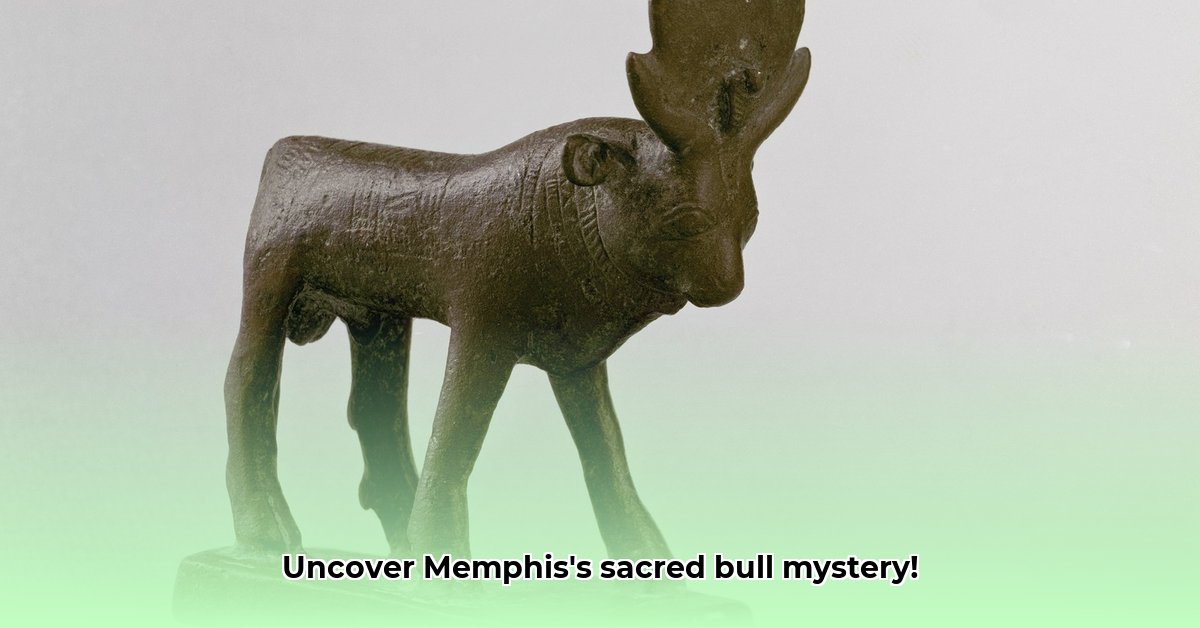
The Heilige Stier van Memphis, or Apis bull, wasn't just any old bull; he was a living god, a potent symbol of fertility and the pharaoh's power in ancient Egypt. His life was inextricably linked to the nation's well-being and the pharaoh's reign, a living, breathing national treasure whose health reflected the prosperity of the land. For centuries, this magnificent creature held a central place in Egyptian religion and society, his story a captivating blend of divine worship, political intrigue, and elaborate funerary rituals.
Finding the Chosen One: A Divine Lottery
Selecting the next Heilige Stier wasn't a random affair. Strict criteria governed the process. The chosen bull had to be black, possess a distinctive triangular white marking on its forehead – a sort of "diamond" – and exhibit other unique physical attributes. Think of it as winning a divine lottery – only a select few calves each year possessed the necessary characteristics to become the sacred bull. This selection process was meticulously documented, with each bull's birth a significant religious event, celebrated with grandeur and ritual. Wouldn't it have been fascinating to witness such a momentous occasion?
A Life of Luxury: Royalty in the Ancient World
Once identified, the lucky bull enjoyed a life of unparalleled luxury. Imagine a five-star stable: a palatial residence, the finest food, and attentive care. His existence was a series of elaborate rituals and festivals; grand processions featuring the Heilige Stier were major spectacles, showcasing the pharaoh's authority and the connection between the gods and the earthly realm. His health was constantly monitored, his well-being considered a direct reflection of the nation's prosperity and the pharaoh's successful rule. A sick bull? That was cause for national anxiety, you can be sure.
Death and the Divine Afterlife: A Pharaoh-Level Funeral
Even in death, the Heilige Stier maintained his immense importance. His mummification was an incredibly complex process, mirroring the elaborate preparations reserved for the pharaohs themselves. This meticulous embalming ritual reinforced his divine status, ensuring his sacredness continued beyond death. He wasn't just buried anywhere; his final resting place was the Serapeum at Saqqara, a vast underground necropolis specifically designed for these sacred animals. The sheer scale and effort invested in the Serapeum speaks volumes about the profound reverence accorded to these bulls. How could a civilisation invest so much in the burial of an animal, except to show its supreme importance?
Beyond Ptah: A Bull of Many Gods
While initially closely associated with the god Ptah in Memphis, the Heilige Stier's symbolism evolved over time. Think of it as a religious chameleon, integrating different deities' attributes across the centuries. His association with Osiris, god of the underworld and rebirth, added another layer of profound meaning to his sacred role. Later under Ptolemaic and Roman rule, the bull became linked to Serapis, dramatically reshaping his image and function. This adaptable symbolism highlights ancient Egyptian religion’s remarkable flexibility. Did this adaptability enhance or detract from the core meaning of the bull? That continues to be a subject of scholarly debate.
The Human Element: The People Behind the Bull
The Apis bull's cult wasn't solely about the bull itself; humans played a pivotal role. Priests dedicated their lives to the bull's care and worship, performing complex ceremonies and rituals. The involvement of priestesses, such as Thaues and Taous, in death rituals, illustrates the diverse and significant roles humans played in this intricate religious system. Their expertise and devotion were vital in upholding the complex practices centered around the Heilige Stier, their knowledge passed down through generations.
A Legacy that Endures: The Bull's Lasting Impact
The Heilige Stier's influence extends far beyond ancient Egypt. His story highlights the fascinating interplay between religious beliefs, political power, and social structures. The meticulously preserved historical records and impressive funerary monuments we've unearthed offer invaluable insights into ancient Egyptian society and its unique religious practices. The enduring fascination with the Heilige Stier continues to captivate and inspire, connecting us to a distant past and reminding us of the power of symbols and humanity's enduring quest for meaning. His story is certainly one that continues to resonate.
How to Identify Authentic Apis Bull Mummies
Identifying authentic Apis bull mummies isn't a straightforward task, requiring a blend of physical examination and contextual evidence. Ancient texts describe the Apis bull’s distinctive markings, which serve as a kind of divine birth certificate. While descriptions vary slightly, certain characteristics consistently emerge: a black coat, specific white markings (a triangular patch on the forehead being most common), and other distinctive features occasionally mentioned in ancient texts but rarely found intact. However, the passage of millennia has negatively impacted preservation, and many mummies have sustained damage, making accurate identification challenging. Additionally, differences in historical accounts present interpretive challenges.
The context of discovery is as crucial as physical attributes. Mummies found within the Serapeum, with accompanying grave goods or hieroglyphic inscriptions, provide stronger evidence of authenticity. The combination of physical characteristics and contextual evidence is vital. The lack of one or the other makes confirmation difficult, requiring expert analysis and cross-referencing historical accounts with the extant archaeological record. This multidisciplinary approach balances Egyptological knowledge with careful on-site analysis of artifacts and their context.